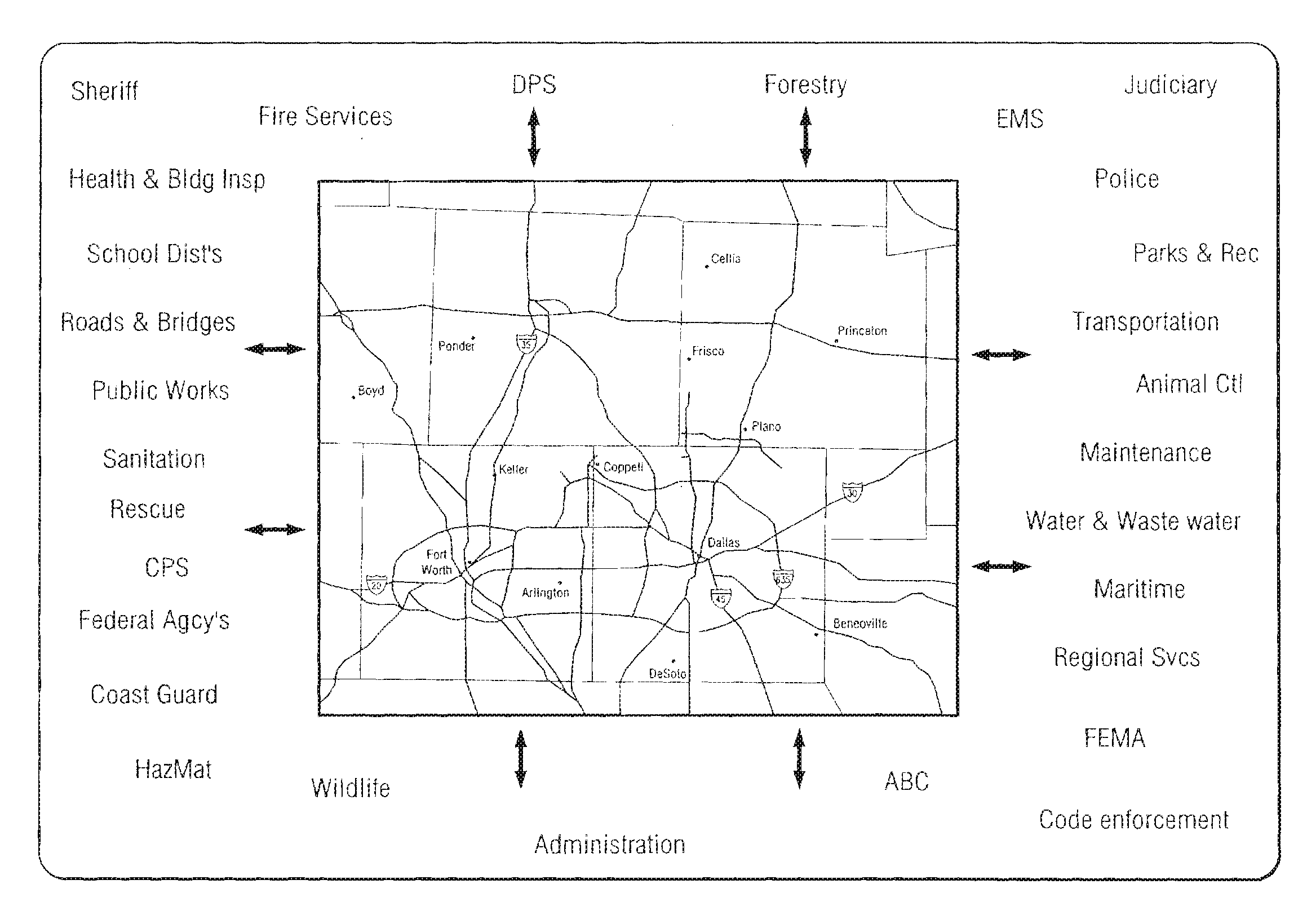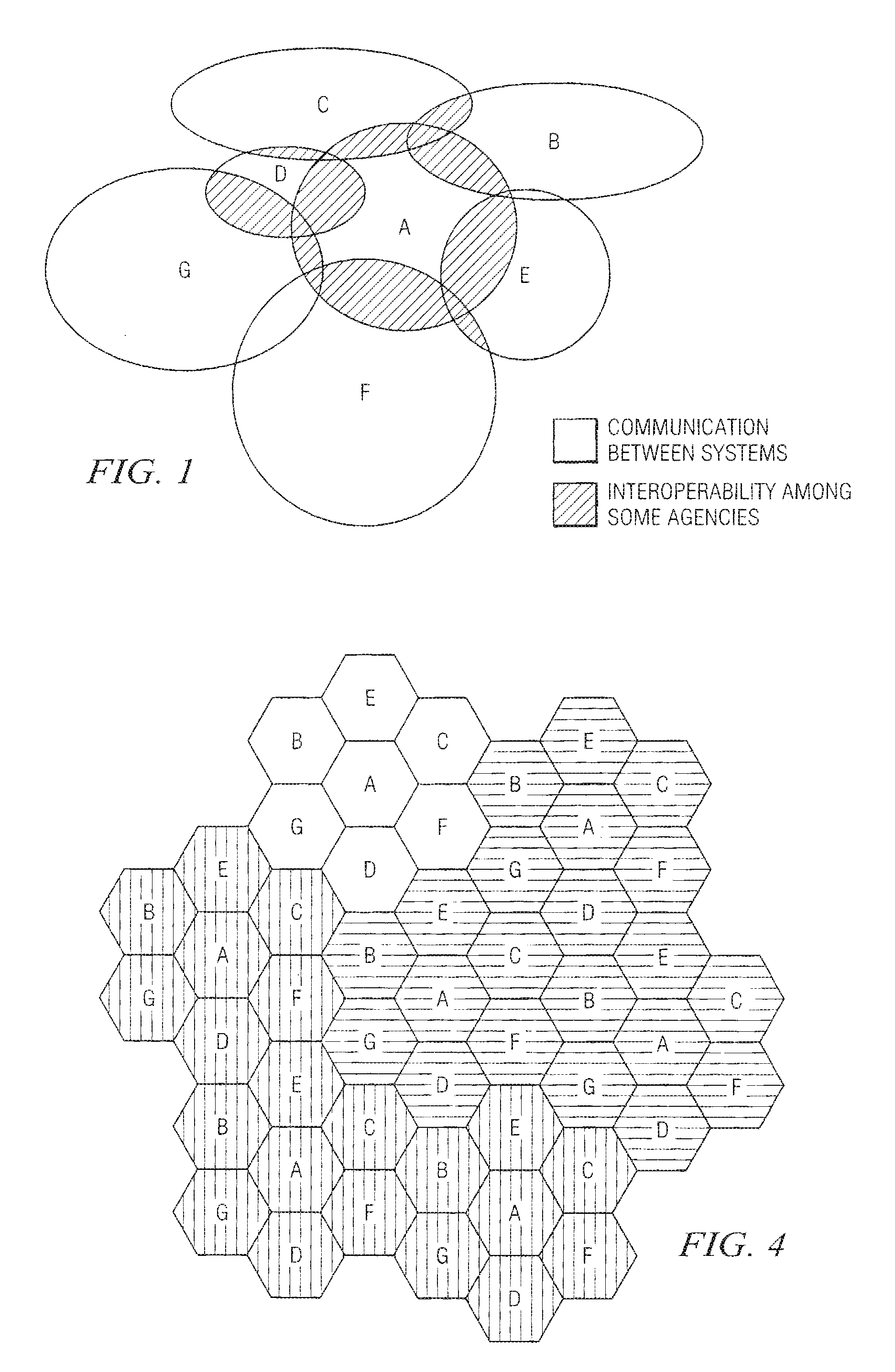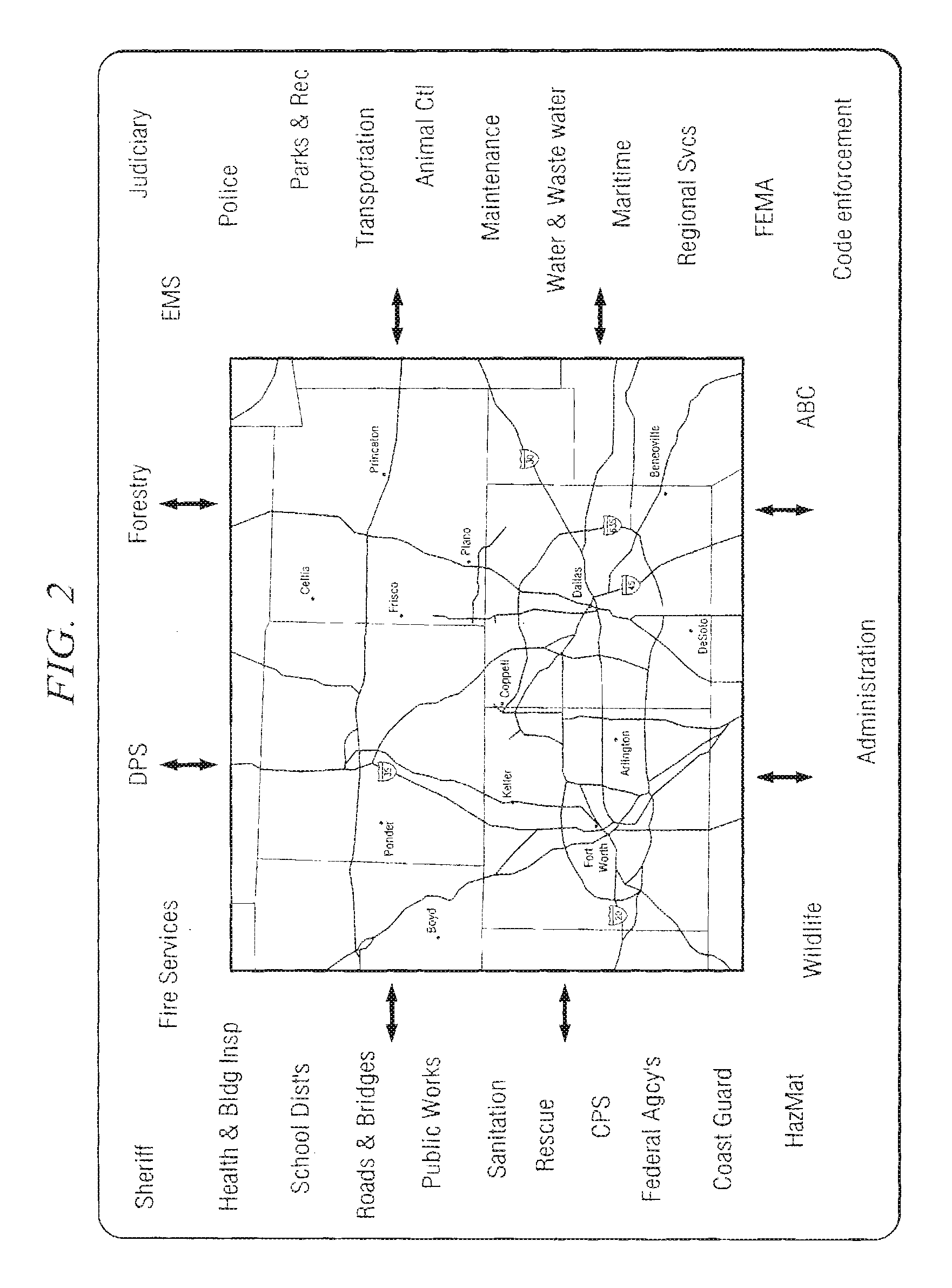Radio interoperability system
a radio interoperability and system technology, applied in the field of radio communication systems, can solve the problems of increasing problems, affecting the interoperability of different agencies, and affecting the interoperability of simple communications, so as to facilitate the request of assistan
- Summary
- Abstract
- Description
- Claims
- Application Information
AI Technical Summary
Benefits of technology
Problems solved by technology
Method used
Image
Examples
example
[0080] To facilitate interaction, support, and coordination of multi-jurisdictional disaster and emergency events, agencies use a Memorandum of Understanding which is a pre-defined outline and agreement to work jointly on such events and a definition of typical procedures and operating methodologies to be utilized in such events.
[0081] A typical report of such an event normally comprises a 911 call to a dispatch center by someone reporting the event (fire, wreck, shooting, disturbance, etc.). The 911 operator / dispatcher screens / defines the call and then issues instructions to the responsible public safety agency. That agency assigns (through a central dispatch facility) the necessary initial resources to respond to the call. Upon arrival at the event location the first responders evaluate the situation and severity against their capabilities and needs. If no additional support or assistance is required, the event commander on site will work the situation on site. If it is determine...
PUM
 Login to View More
Login to View More Abstract
Description
Claims
Application Information
 Login to View More
Login to View More - R&D
- Intellectual Property
- Life Sciences
- Materials
- Tech Scout
- Unparalleled Data Quality
- Higher Quality Content
- 60% Fewer Hallucinations
Browse by: Latest US Patents, China's latest patents, Technical Efficacy Thesaurus, Application Domain, Technology Topic, Popular Technical Reports.
© 2025 PatSnap. All rights reserved.Legal|Privacy policy|Modern Slavery Act Transparency Statement|Sitemap|About US| Contact US: help@patsnap.com



